Poisonous plants that cause contact dermatitis are—
• Cowhage.
• Poison ivy.
• Poison oak.
• Poison sumac.
• Rengas tree.
• Trumpet vine.
INGESTION POISONING
Ingestion poisoning can be very serious and could lead to death very quickly. Do not eat any plant unless you have positively identified it first. Keep a log of all plants eaten.
Signs and symptoms of ingestion poisoning can include nausea, vomiting, diarrhea, abdominal cramps, depressed heartbeat and respiration, headaches, hallucinations, dry mouth, unconsciousness, coma, and death.
If you suspect plant poisoning, try to remove the poisonous material from the victim’s mouth and stomach as soon as possible. Induce vomiting by tickling the back of his throat or by giving him warm saltwater, if he is conscious. Dilute the poison by administering large quantities of water or milk, if he is conscious.
The following plants can cause ingestion poisoning if eaten:
• Castor bean.
• Chinaberry.
• Death camas.
• Lantana.
• Manchineel.
• Oleander.
• Pangi.
• Physic nut.
• Poison and water hemlocks.
• Rosary pea.
• Strychnine tree.
POISONOUS PLANTS
Castor bean, castor-oil plant, palma Christi
Ricinus communis
Spurge (Euphorbiaceae) Family
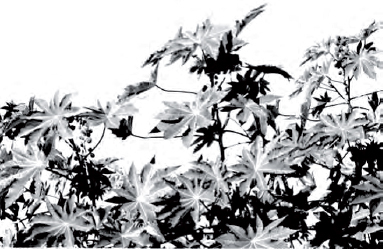
Description: The castor bean is a semiwoody plant with large, alternate, starlike leaves that grows as a tree in tropical regions and as an annual in temperate regions. Its flowers are very small and inconspicuous. Its fruits grow in clusters at the tops of the plants.
All parts of the plant are very poisonous to eat. The seeds are large and may be mistaken for a beanlike food.
Habitat and Distribution: This plant is found in all tropical regions and has been introduced to temperate regions.
Chinaberry
Melia azedarach
Mahogany (Meliaceae) Family
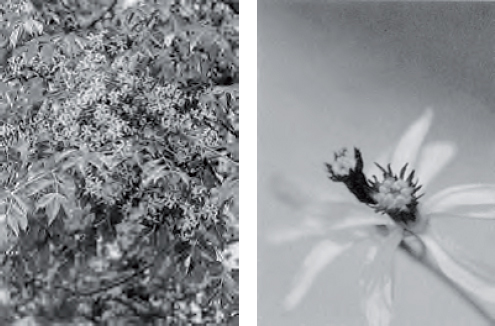
Description: This tree has a spreading crown and grows up to 14 meters tall. It has alternate, compound leaves with toothed leaflets. Its flowers are light purple with a dark center and grow in ball-like masses. It has marble-sized fruits that are light orange when first formed but turn lighter as they become older.
All parts of the tree should be considered dangerous if eaten. Its leaves are a natural insecticide and will repel insects from stored fruits and grains. Take care not to eat leaves mixed with the stored food.
Habitat and Distribution: Chinaberry is native to the Himalayas and eastern Asia but is now planted as an ornamental tree throughout the tropical and subtropical regions. It has been introduced to the southern United States and has escaped to thickets, old fields, and disturbed areas.
Cowhage, cowage, cowitch
Mucuna pruritum
Leguminosae (Fabaceae) Family
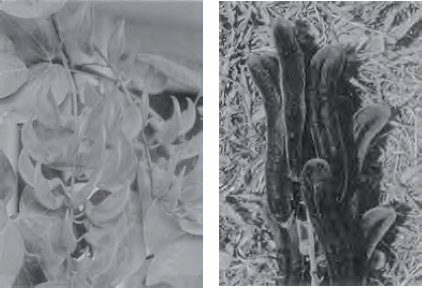
Description: A vinelike plant that has oval leaflets in groups of three and hairy spikes with dull purplish flowers. The seeds are brown, hairy pods.
Contact with the pods and flowers causes irritation and blindness if in the eyes.
Death camas, death lily
Zigadenus species
Lily (Liliaceae) Family
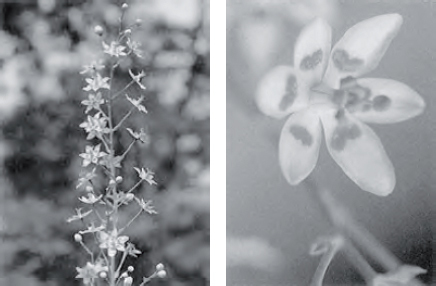
Description: This plant arises from a bulb and may be mistaken for an onionlike plant. Its leaves are grasslike. Its flowers are six-parted and the petals have a green, heart-shaped structure on them. The flowers grow on showy stalks above the leaves.
All parts of this plant are very poisonous. Death camas does not have the onion smell.
Habitat and Distribution: Death camas is found in wet, open, sunny habitats, although some species favor dry, rocky slopes. They are common in parts of the western United States. Some species are found in the eastern United States and in parts of the North American western subarctic and eastern Siberia.
Lantana
Lantana camara
Vervain (Verbenaceae) Family
Description: Lantana is a shrublike plant that may grow up to 45 centimeters high. It has opposite, round leaves and flowers borne in flat-topped clusters. The flower color (which varies in different areas) maybe white, yellow, orange, pink, or red. It has a dark blue or black berrylike fruit. A distinctive feature of all parts of this plant is its strong scent.
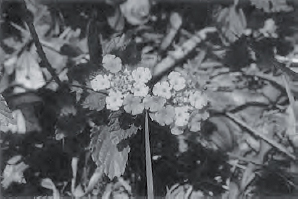
All parts of this plant are poisonous if eaten and can be fatal. This plant causes dermatitis in some individuals.
Habitat and Distribution: Lantana is grown as an ornamental in tropical and temperate areas and has escaped cultivation as a weed along roads and old fields.
Manchineel
Hippomane mancinella
Spurge (Euphorbiaceae) Family
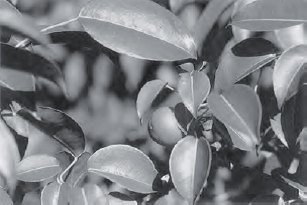
Description: Manchineel is a tree reaching up to 15 meters high with alternate, shiny green leaves and spikes of small greenish flowers. Its fruits are green or greenish-yellow when ripe.
This tree is extremely toxic. It causes severe dermatitis in most individuals after only half an hour. Even water dripping from the leaves may cause dermatitis. The smoke from burning it irritates the eyes. No part of this plant should be considered a food.
Habitat and Distribution: The tree prefers coastal regions. Found in south Florida, the Caribbean, Central America, and northern South America.
Oleander
Nerium oleander
Dogbane (Apocynaceae) Family
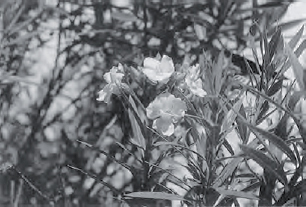
Description: This shrub or small tree grows to about 9 meters, with alternate, very straight, dark green leaves. Its flowers may be white, yellow, red, pink, or intermediate colors. Its fruit is a brown, podlike structure with many small seeds.
All parts of the plant are very poisonous. Do not use the wood for cooking; it gives off poisonous fumes that can poison food.
Habitat and Distribution: This native of the Mediterranean area is now grown as an ornamental in tropical and temperate regions.
Pangi
Pangium edule
Pangi Family
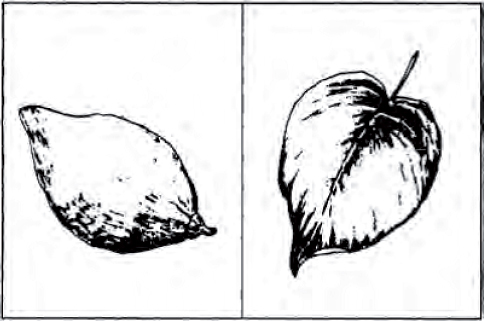
Description: This tree, with heart-shaped leaves in spirals, reaches a height of 18 meters. Its flowers grow in spikes and are green in color. Its large, brownish, pear-shaped fruits grow in clusters.
All parts are poisonous, especially the fruit.
Habitat and Distribution: Pangi trees grow in southeast Asia